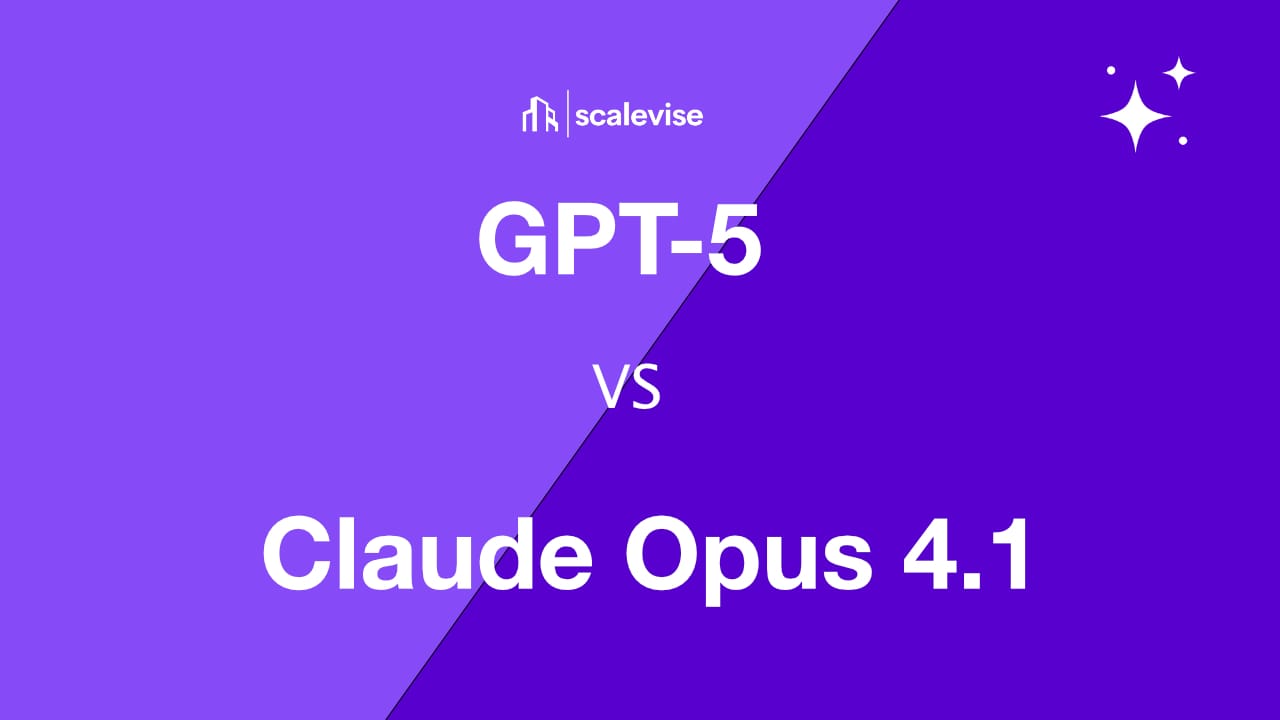GPT-5 vs Claude Opus 4.1: The Overlooked Differences That Matter for Your Business

This article is a follow-up to our in-depth comparison: Claude Opus 4.1 vs GPT-5: Which AI Model Is Right for Your Business?
When most AI comparisons focus on accuracy, speed, or creative ability, they tend to leave out a set of equally critical factors that influence long-term business value. If you are deciding between GPT-5 and Claude Opus 4.1, the conversation should extend beyond surface-level benchmarks.
This article explores the less-discussed differences that could impact cost, integration, compliance, and strategic flexibility areas where the right choice can either unlock scalability or lock you into limitations.
1. Developer Ecosystem & Tooling Support
GPT-5 benefits from the broader OpenAI developer ecosystem. The API has mature SDKs, client libraries, and a long history of third-party plugins that integrate with major frameworks. This means shorter time-to-market for development teams, as much of the tooling is already battle-tested.
Claude Opus 4.1, while growing fast, is still catching up in terms of integration-ready libraries and dev community size. However, Anthropic's partnership approach especially through dedicated enterprise integration teams is giving it rapid traction in specialized industries like legal tech and compliance-heavy sectors.
Key takeaway: If you rely on an extensive open-source ecosystem and want faster prototyping, GPT-5 is still ahead. For tailored enterprise solutions, Claude’s emerging partner-first approach may align better.
Also See: Claude Comes with Privacy-First Memory Something GPT-5 Could Learn From
2. Fine-Tuning Capabilities for Industry Use
Beyond prompt engineering, custom fine-tuning can turn a general-purpose model into a specialized business tool.
- GPT-5 offers controlled fine-tuning with strict oversight on dataset quality, which helps maintain compliance but may slow down experimentation.
- Claude 4.1 offers more flexible fine-tuning options, allowing businesses to adjust weights for niche workflows particularly useful in R&D-heavy fields.
Why it matters: If you operate in a regulated industry, GPT-5’s structured process reduces compliance risks. For industries moving fast with proprietary datasets, Claude’s flexibility can be a competitive advantage.
3. Workflow Integration in Enterprise Automation
GPT-5 integrates seamlessly with automation platforms like Make, Zapier, and enterprise middleware solutions. Its function-calling and structured output features allow for precise task execution across business systems.
Claude 4.1 excels at multi-step reasoning across documents making it ideal for automated knowledge extraction, legal analysis, and summarization pipelines that feed into BI tools.
Decision point: GPT-5 is better suited for transactional automation where precision is key. Claude shines in knowledge-heavy automation flows.
4. Latency & Stability Under Heavy Load
Performance under load is often overlooked until scaling becomes an issue.
- GPT-5 generally offers lower average latency in standard environments, but spikes can occur during global traffic surges.
- Claude 4.1 shows stable latency but slightly higher baseline response times, making it more predictable for workloads that require consistent timing.
Business impact: If your application relies on sub-second response times, GPT-5 has the edge. For batch processing or predictable service-level agreements (SLAs), Claude might provide fewer surprises.
5. Vendor Lock-In & Migration Risk
Choosing an AI vendor isn’t just about features it’s about exit strategy.
- GPT-5’s proprietary ecosystem means switching vendors later may require refactoring code, changing APIs, and retraining staff.
- Claude 4.1’s growing compatibility with open standards makes it easier to pivot if business or cost conditions change.
Pro tip: Even if you start with GPT-5, abstract your AI calls behind a middleware layer to protect against future migration costs.
6. Compliance Certifications & Audit Trails
For companies under strict regulatory oversight, compliance readiness can be a deal-breaker.
- GPT-5 is part of Microsoft’s Azure AI compliance stack, inheriting a broad set of certifications (ISO, SOC, HIPAA, GDPR-ready frameworks).
- Claude 4.1 is investing heavily in AI safety and interpretability, with an emphasis on transparent decision-making logs.
Bottom line: GPT-5 offers compliance breadth. Claude offers compliance depth in explainability.
Strategic Recommendation from Scalevise
If you:
- Need maximum developer tooling and mature integrations → GPT-5 is the safer bet.
- Require flexible fine-tuning and knowledge-heavy workflows → Claude 4.1 could be the smarter move.
At Scalevise, we help businesses design AI stacks that avoid vendor lock-in, maximize ROI, and comply with industry regulations. We can audit your AI strategy and recommend the most cost-effective, scalable, and compliant setup.
Contact us today to plan your AI roadmap
Related Resources
